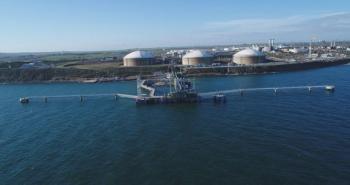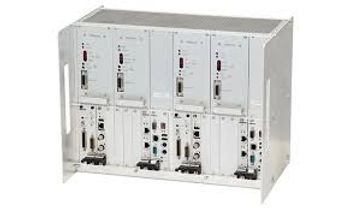
Rolls-Royce Tackles Submarine Power Demand with mtu Propulsion, Automation Systems
With future submarines expected to require increased electrical power, the mtu charging unit and NautIQ automation system will enable higher power output and integrated control, respectively.
Rolls-Royce is developing new mtu energy and automation solutions for current and future submarine models, including:
- an upgraded, higher-power submarine charging unit; and
- NautIQ automation systems for subsea ship control and monitoring.
Both solutions will be launched in early November at the Euronaval conference held in Paris.
Newly released and planned submarines demand more electrical power than previous models, primarily due to increased on-board electronic equipment and modern battery storage systems enabling faster charges. However, there is an emerging need for smaller footprint charging aboard these vessels.
On-Board Power Generator
Rolls-Royce’s new concept involves an on-board power generator driven by the planned 20-cylinder version of the mtu Series 4000 submarine engine. The new model will have a higher power output, enabling faster battery-charge times and reducing the submarine’s surface exposure. Also, the compact design minimizes footprint in the hull by eliminating the need for an extra genset.
For the submarine variant, the company also:
- Modified the charge air system
- Modified the combustion system
- Reduced vessel signature
- Verified the charging unit’s integration into modern submarines
NautIQ Master Automation
The NautIQ Master automation system will be updated with integrated control and monitoring capabilities for sub-surface platforms. The automation solution controls both the propulsion system and power supply, monitors unit condition, and integrates various standard systems. It can be expanded with modules such as damage control, on-board training, alarm and monitoring, navigation, and communication systems—all of which can be controlled via standardized user interface.
Rolls-Royce Marine Solutions
In September 2024,
The framework agreement reorganizes the cooperation, accelerates processes, simplifies procedures, and defines common standards for overhaul work. It will reduce time spent on engine and propulsion system overhaul work, particularly for mtu Series 4000 engines. The contract also ensures faster, more flexible deployment of Rolls-Royce specialists at Lürssen’s shipyard and increased spare part availability. Lürssen technicians will be trained to work on mtu engines in alignment with Rolls-Royce standards.
Earlier that month, Rolls-Royce offered the mtu Series 1163 and 8000 large engines, in a power range between 4,800 – 10,000 kW, with
Compared to previous engines in compliance with IMO II, the new models have exhaust gas aftertreatment with an SCR system as a primary component. The system reduces NOx emissions by 75% over IMO II limits. It is actively controlled, with upstream and downstream emissions continuously measured. Measurement ensures optimum, compliant exhaust gas aftertreatment and minimum dosage of reducing agent.
Newsletter
Power your knowledge with the latest in turbine technology, engineering advances, and energy solutions—subscribe to Turbomachinery International today.




